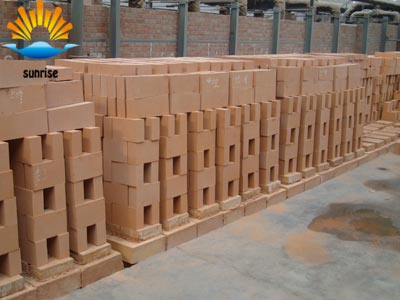Product
Fused Cast AZS Block
AZS Casting Type
AZS Ramming Materials
Fused Cast AZS TY-AZS41
Fused Cast AZS TY-AZS36
Fused Cast AZS TY-AZS33
Fused Cast Alumina Block
Fused cast Alumina Block TY-H
Fused cast Alumina Block TY-A
Fused cast Alumina Block TY-M
Fused Cast High Zirconia Block
Fused Cast Skid Rail Block
Silica brick
Magnesia Series Brick
Bonded Refractory Block
High alumina And Fire clay bricks
Insulation Series Brick
Ceramic Fiber Products
Contact Details
- 0086 371 63838939
- 0086 371 63835539
- sales@sunriserefr.com
- tkfanyi
- No.36 Fengchan Road, Zhengzhou City
Solutions
Various parts of glass furnace refractories and precautions
- More related products
- Fused Cast AZS Block
- Fused Cast Alumina Block
- Fused Cast High Zirconia Block
- Fused Cast Skid Rail Block
Glass kiln lining the main damage to the main chemical erosion, and the role of thermal stress. The extent of chemical attack, the speed and the use of parts, kiln temperature, melting glass varieties are closely related, of course, the quality of the lining itself is also crucial. The nature of the refractory used in the glass kiln has a very significant effect on the operation of the glass kiln and on the quality of the glass. The use of poor quality refractory materials not only causes frequent shutdowns, limited melting temperatures and kiln output, but also shortens the life of the kiln and at the same time causes various defects (streaks, stones) in the glass, Reduce the quality of the glass.

Read more
Need more information? Drop us a line
For more information on any of our products please get in touch using the form below. One of our sales team will respond to your enquiry as soon as possible.
Copyright © 2014 Zhengzhou Sunrise Refractory Co., Ltd. Site Index Product IndexSitemap









